A. Preparatory actions
A1. Separation and characterization of the different fractions of the meat waste and selection of fats animals:
- A1.1 Classification and characterisation of each raw material
- A1.2 Mechanical separation of the fat fraction from the proteic
- A1.3 Analysis of the properties of the fat and protein fractions
A2. Permits and licenses for the installation of the pilot plant:
- A2.1 Adequacy of the facilities to meet the requirements of the Technical Building Code
- A2.2 Guarantee the hygiene, health and environmental protection conditions
- A2.3 External services (water, energy …) for the operation of the pilot plant
C. Implementation actions
C1. Pre-treatment and conditioning of meat waste. Selection of conditions for enzymatic hydrolysis of the protein fraction. Characterization and validation of the protein product:
- C1.1: Selection of conditions for the extraction of animal fat for production biodiesel
- C1.2: Recovery, characterization and validation of the protein fraction obtained as by-product of the animal fat separation process
C2. Manufacturing, scaling (forming) and quality control of the catalyst transesterification
-
- C2.1. Powdery Catalyst Manufacturing and Quality Control
- C2.2. Shaped catalyst fabrication and quality control
C3. Design and construction of the pilot plant
-
-
- C3.1: Design of the pilot plant
- C3.2: Construction of the pilot plant
-
C4. Validation of the technology
-
-
- C4.1: Biofuel production and process optimization
- C4.2: Characterization and validation of the biofuels produced
- C4.3. Characterization, validation and formulation of the protein product produced
- C4.4: Evaluation and final conclusions
-
C5. Strategy development to ensure the replicability and transferability of the technology
-
-
- C.5.1 Feasibility study of the new catalytic process of the LIFE Superbiodiesel project
- C5.2 Marketing strategies
- C5.3 Planning and making contacts
- C5.4 Content development
- C5.5 Planned / planned activities after project completion
-
C6. Exploitation & commercialisation plan
-
-
- C.6.1 Biofuels
- C.6.2 Biostimulants
-
D. Monitoring of the impact of the project actions
D1. Monitoring of the impact of the project through environmental indicators:
-
-
- D.1.0 Methodology
- D.1.1 Carbon footprint monitoring
- D.1.2 Measurement of the rest of environmental indicators
-
D2. Monitoring of the impact of the project through socioeconomic indicators:
-
-
- D.2.1. Socio-economic assessment
- D.2.2. Return on investment at the partner level
- D.2.3. Construction of a simulation model for the techno-economic evaluation of the process in alternative scenarios
-
E. Communication and dissemination
E1. Communication & dissemination of results. Networking
-
-
- E1.1 Communication Plan
- E1.2 Execution of the determined communication actions
- E1.3 Monitoring and follow-up of communication actions. Expected reach
- E1.4 Networking (Ongoing)
- E1.5 Contribution to EU policy making(Ongoing)
-
F. Project management
F1. Project management
-
-
- F1.1 Project Management
- F1.2 Project progress monitoring (Ongoing)
-
F2. After Life communication Plan
(Ongoing)





